

Technical SEO vs. Content SEO: How Each Works Differently
SEO appeals to businesses because, when executed properly, search optimization often leads to marketing success by improving brand positioning, increasing reach, and enhancing the brand’s visibility in popular search engines like Google Search and Bing.
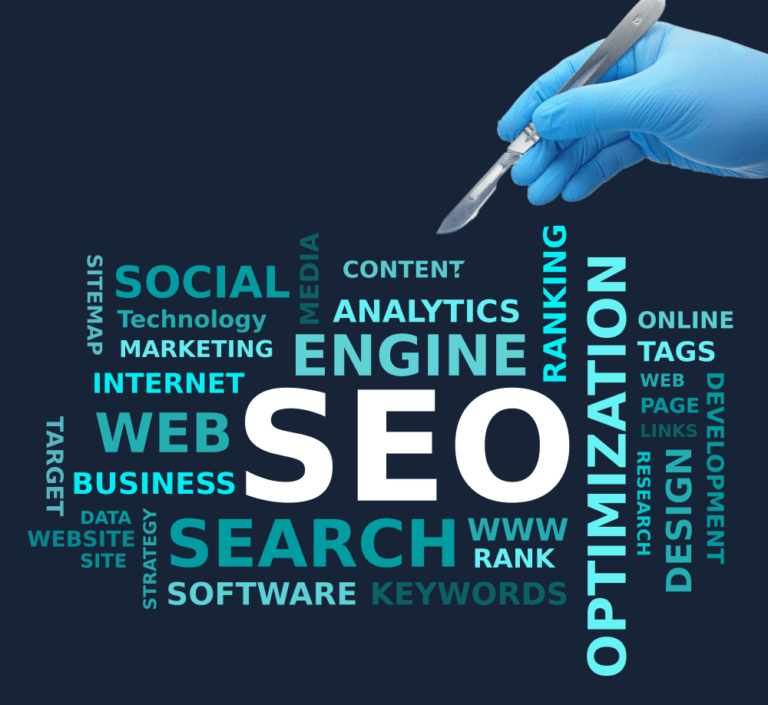
Content optimized for search is a gift that keeps on giving, continuously driving traffic from organic search results–unlike PPC keyword traffic that disappears the moment ads stop running.
Today, achieving your search performance goals is more challenging because Google’s algorithm has become so complex as it decides how to rank content.
Search engines look deeper than meta descriptions and the words on the page. Their algorithms are incredibly sophisticated, factoring in numerous “signals” to instantly assess the quality of a webpage and how highly it should rank for a certain keyword.
This is why successfully optimizing content to capture search audiences requires both a broad perspective and surgical precision.
To rank well in search, your website and content must be built with a strong technical foundation based on clean code and mobile optimization for superior performance.
Its on-page content must follow SEO best practices, such as strategic keyword usage, internal linking, and structured data. Combining these disciplines to execute a successful SEO strategy requires a thoughtful and distinct approach.
To help you understand the comprehensive nature of what is needed to win in organic search, we will highlight the differences between technical SEO and content SEO strategies.
A Quick Look at the Differences Between Technical SEO and Content SEO
Technical SEO sets the stage for SEO success, optimizing site performance for search engines, while content SEO delivers with engaging, keyword-rich content.
Together, they boost rankings and user experience.
Technical SEO focuses on behind-the-scenes elements like site speed, mobile-friendliness, and structured data. Content SEO centers on crafting valuable, keyword-rich content that resonates with your audience.
These combine to create the “secret sauce” of SEO.
| Topic | Technical SEO | Content SEO |
| Scope | Website infrastructure and technical functionality | Content quality, relevance, and keyword strategy |
| Primary Goal | Improve crawlability, speed, and site performance | Enhance user engagement and search relevance |
| Key Activities | Optimizing code, URLs, site speed, and security | Writing blogs, optimizing meta tags and headers |
| Tools Used | Google Search Console, GTmetrix, Screaming Frog | SEMrush, Ahrefs, SurferSEO |
| Impact | Ensures a strong foundation for search engine indexing | Drives organic traffic through targeted content |
| Target Audience | Search engine crawlers | Your readers and search engine algorithms |
What is Technical SEO?

Technical SEO refers to how your website is set up to help search engines crawl, interpret, and index your pages and how your site provides visitors with the best user experience.
Unlike content marketing, technical SEO involves code-based work. It requires an experienced web developer for implementation and testing.
Google offers a free tool called Lighthouse to quickly assess your website’s performance. Scoring in the 90s on all four components indicates you have a solid technical foundation.
What Does Technical SEO Include?
Technical SEO encompasses many different activities. By focusing on the following factors you would likely see your Lighthouse scores improve dramatically.
Page Speed Optimization
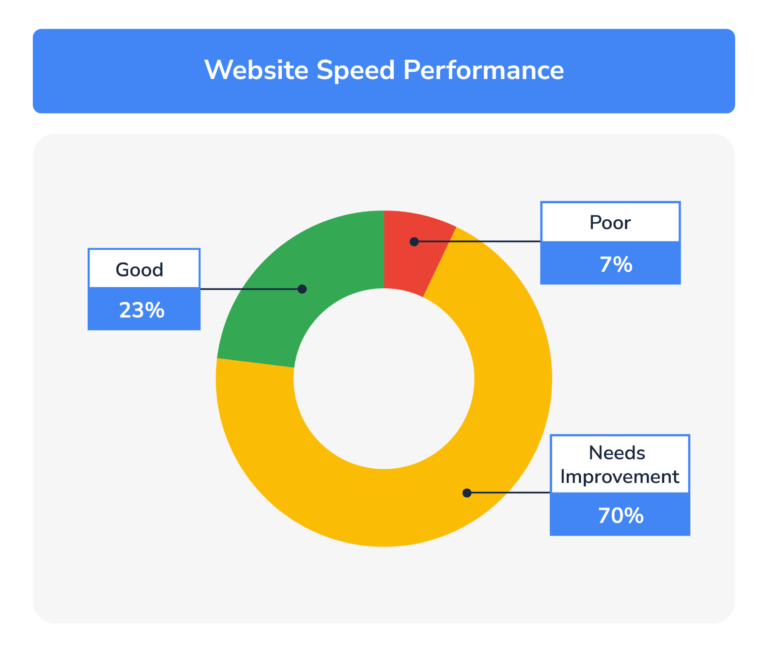
Your website page speed and load times affect user experience and, ultimately, SEO performance, because users are more likely to abandon sites with slow-loading pages.
Additionally, Google's Page Experience update penalizes slower sites in its search rankings.
You can improve page loading times by compressing files, optimizing images, caching data, and limiting 301 redirect links.
Structured Data
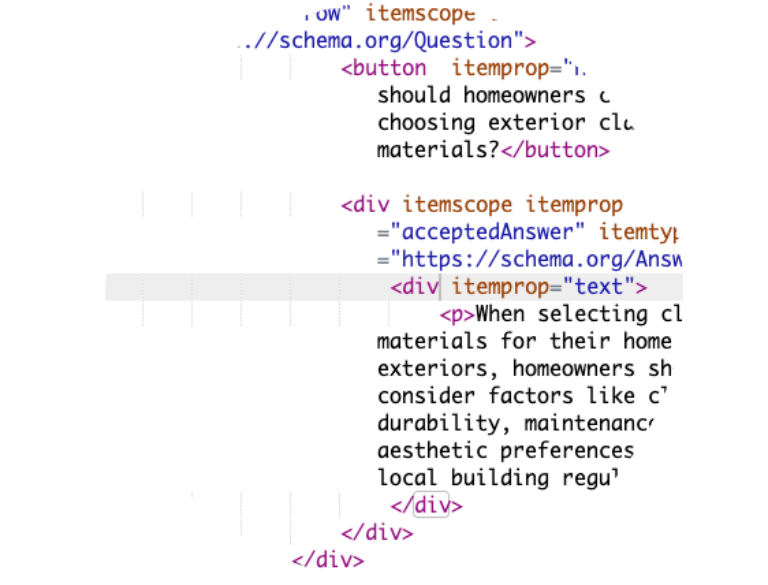
Implementing structured data such as schema markup harnesses the power of the semantic web.
Simply, schema helps search engines like Google interpret the context of the words and media used on your site, increasing your chances of high search rankings. Applying schema makes Google’s job easier.
Search engines also rely on structured data to render your content as rich search results, also known as "featured snippets" or AI results
Robots.txt Files
A text file in your website’s root directory, “robots.txt,” instructs what search engines can and can’t crawl on your website.
Disallow low-value pages, duplicate pages, and other content you don’t want to be indexed to conserve your “crawl budget,” which is the set amount of time search engines designate for crawling entire websites–that’s why helping crawlers efficiently navigate the site and ignore the unimportant pages can ultimately help your ranking.
These pages generally include Thank You and other confirmation pages, policy and terms pages, and cart or checkout pages.
Meta Robots Tags
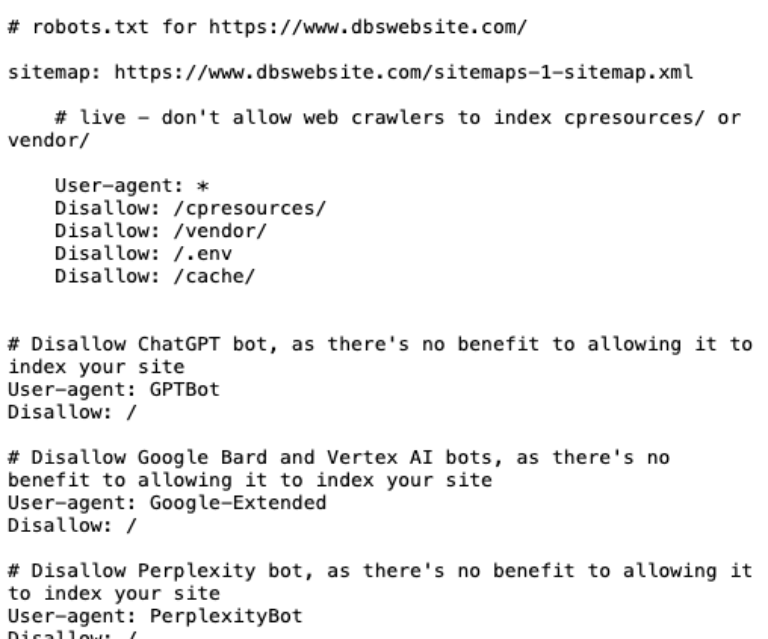
Similar to robots.txt, the meta robots HTML tag instructs the search engine crawler how to handle a webpage. It uses the "content=noindex" or “content=nofollow" option.
- NoIndex – Prevents the page from appearing in search results.
- NoFollow – Prevents search engines from following any links on the page.
Sitemaps
Sitemaps contain the list of every page on a website, along with some essential details about those pages. Search engines use sitemaps to find pages and figure out how often they should crawl a site.
Your sitemap should include any page you want to appear on a search engine results page (SERP).
Mobile-Optimized Responsive Design

Websites that use responsive design via the mobile viewport are more likely to be considered “mobile friendly” by search engines.
Responsive design scales a website to render according to the device screen, like a smartphone or tablet, creating a better user experience.
This eliminates the need to make alternative versions of your website based on user agreement, which is even more time and money for your development team.
Additionally, incorporating a Progressive Web App (PWA) improves this experience, enabling offline functionality and fast loading across all devices.
Website and Information Architecture
Site architecture organizes and delivers content on your website, while information architecture arranges that content within the structure.
Both help search engines and users understand your website. Optimizing your site architecture improves the user experience and helps search engine bots find content efficiently.
Digital Accessibility
Web accessibility involves making relevant content and images more easily accessible to differently abled users. What many marketers may not know is that accessibility has a positive impact on SEO because accessible content and SEO-optimized content are both machine-readable.
Search engines and assistive technologies (such as screen readers) are quite similar in how they read and navigate your site.
Fixing Broken Links
Users and search engines alike hate dead ends. Broken links return a 404 error when clicked instead of seeing the intended page because the destination does not exist.
Typical reasons for broken links
- The targeted website is no longer available.
- The targeted webpage was moved without a 301 redirect being added.
- The URL structure of the website was changed.
Using Secure Web Servers

Google and other search engines use Secure Sockets Layer (SSL) as a search ranking signal. SSL, now known as Transport Layer Security (TLS) is a security technology that creates an encrypted link between a web server and a browser.
You can easily spot a site using SSL: The website URL starts with "https" rather than "HTTP."
The protocol protects sensitive information like login credentials, payment details, and personal data.
TLS also establishes trust, as browsers flag sites without SSL as "Not Secure," which can deter visitors.
How Technical SEO Influences Your Search Engine Rankings
Technical SEO is essential because it directly affects your site's ability to be seen, crawled, and indexed by search engines. Without proper technical optimization, search engines may struggle to access, understand, and rank your content—no matter how great it is.
Factors like site speed, structured data, and mobile-friendliness ensure that your site meets search engine preferences and provides a seamless user experience. Strong technical SEO lays the foundation for higher rankings and better organic performance.
Preserving Crawl Budget
The fact is that without a robots.txt file or sitemap, search bots would waste time and technical effort accessing things like images or videos. Or, if you don’t use canonical URLs, users linking alternate versions of a page, which dilutes your website’s link equity.
If you don't have structured data, then your knowledge panel isn’t going to look robust in Google SERPs, either.
Featured Snippets & Voice Searches
Without technical SEO using structured data or schema markup, it becomes more difficult for search engines to contextualize content on your site to determine the value of highlighting the information as a featured snippet, also called a rich text snippet. Winning these can increase brand visibility and clickthroughs to your site.
How to Assess Technical SEO Success

Technical SEO isn’t just about tweaking code—it’s about optimizing your website’s structure, performance, and usability to improve search visibility and user experience.
A well-optimized site loads faster, is easier to navigate, and ensures search engines can properly crawl and index your content—all of which impact rankings.
Regularly measuring and testing your website’s technical SEO ensures optimal performance, better search visibility, and ease of user experience. Leveraging free tools like Google Lighthouse, PageSpeed Insights, and Search Console can help you identify and resolve issues that impact rankings.
Google Lighthouse
Google Lighthouse is an open-source tool that audits web pages for performance, accessibility, SEO, and best practices, helping developers and site owners improve user experience and search rankings.
- Provides audits for performance, accessibility, best practices, SEO, and Progressive Web App (PWA) compliance.
- Helps identify Core Web Vitals issues, such as slow load times and layout shifts.
- Offers actionable recommendations to improve website performance and search rankings.
Google PageSpeed Insights
Google PageSpeed Insights analyzes a webpage’s load speed and Core Web Vitals on mobile and desktop, offering actionable recommendations to enhance performance and usability.
- Analyzes page load speed on both mobile and desktop devices.
- Measures Core Web Vitals (LCP, FID, CLS) and provides optimization suggestions.
- Scores website performance and highlights opportunities for improvement.
Google Search Console
Google Search Console is a free tool that provides insights into website indexing, search performance, 404 errors, and technical issues, allowing site owners to optimize their visibility in Google Search.
- Monitors site indexing, crawl errors, and search performance.
- Provides insights on mobile usability, structured data, and security issues.
- It helps identify technical SEO problems that may impact search rankings.
For deeper analysis and advanced reporting, paid tools such as Screaming Frog, Ahrefs, SEMrush, and Sitebulb offer comprehensive audits, crawl insights, and competitive data to help fine-tune your technical SEO strategy.
What is Content SEO?
Content SEO is a digital marketing strategy focused on improving various signals search engines use to evaluate your website, boosting organic search rankings, and driving relevant users to your site.
Content SEO involves optimizing on-page elements such as high-quality content, strategic keyword usage, internal linking, external backlinks, meta tags, and structured data to improve search visibility and user engagement.
It also includes ensuring content relevance, readability, and freshness to align with search intent.
Why is Content SEO Important?
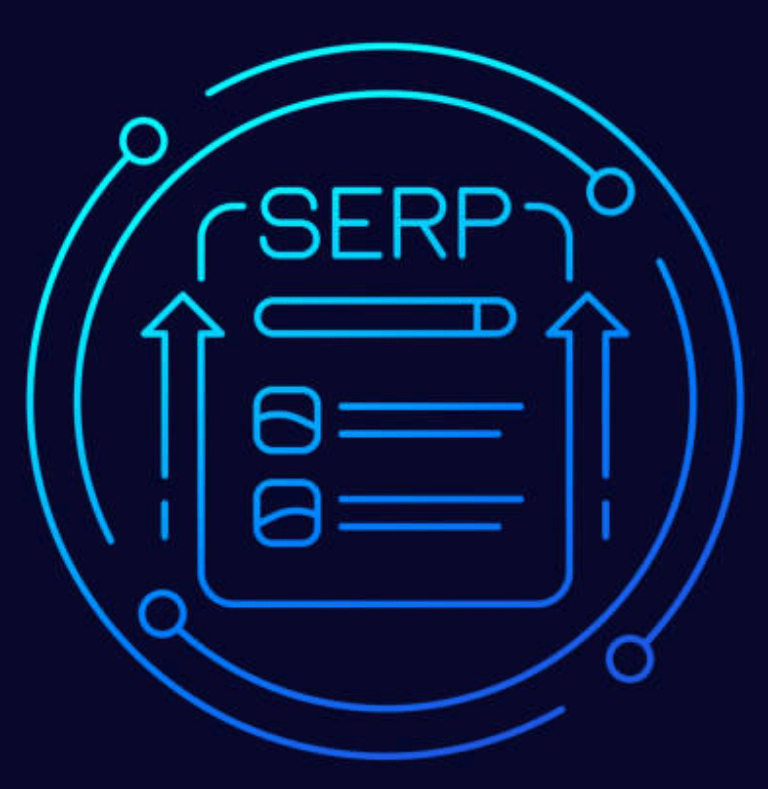
Content marketing amplifies brand presence in online search, attracting new and returning audiences at various customer journey stages.
Producing content that outranks competitors’ content on Google or Bing isn't straightforward.
The search engine will evaluate your content against all other websites (there are well over a billion) and rank your pages in the SERPs according to how well your content measures up against all that content published on competing sites.
Content marketing establishes high relevance in as many of Google’s ranking criteria as possible.
What’s important to understand is that those criteria keep changing with each algorithm update; therefore, your content SEO strategy has to evolve and adapt continuously.
Otherwise, your search rankings will eventually drop after a future update.
What’s the Value of Internal Linking
Internal linking is a crucial SEO strategy that improves website navigation, enhances user experience, and strengthens your site’s overall structure.
By strategically linking relevant pages, you help search engines understand content relationships and distribute page authority across your site, boosting rankings. Well-placed internal links also keep users engaged longer, reducing bounce rates and increasing conversions.
Additionally, they guide search engine crawlers to discover and index important pages more efficiently, ensuring your content gets the visibility it deserves.
What’s the Importance of Link Building
High-quality, link-worthy content entices reputable external sites to link to your site
When you do content effectively, it can be naturally link-worthy, helping build the right kind of links. It means high-quality and natural links from readers and publications who want to share your content.
Producing timely and industry-relevant content combines the benefits of link-building and on-page SEO for lasting search performance. If you publish great, evergreen articles, you’ll continue attracting links and staying at the top of SERPs for a long time.
Here is an example we created for a client that is still earning links and performing search queries relative to their market and industry (in this case, supply chain logistics).
Why Quality Content Matters and How E-A-T Elevates It
In the SEO world, “E-A-T” stands for “Expertise, Authoritativeness and Trustworthiness.”
Google’s Guidelines for Search Quality Raters discusses the concept in detail (181 pages). It’s the guide that helps webmasters understand what the search engine’s algorithms “look for” in a web page.
The main takeaway is that demonstrating good E-A-T in content published on your site and elsewhere can help improve Google rankings. Additionally, while E‑A-T is essential for all queries, some are more affected than others.
For example, some pages or topics will impact a person's future happiness, health, financial stability, or safety. Google calls these “Your Money or Your Life” pages or YMYL. If your site is built around a YMYL topic, demonstrating E-A-T is crucial for its Google performance.
It’s also important to understand that expertise, authoritativeness, and trustworthiness are similar concepts—but not identical. Therefore, they’re each evaluated independently using a different set of criteria, so no simple “catch-all” methodology will address the breadth of Google’s E-A-T requirements.
What Does Content SEO Include?
Content SEO encompasses various tactics for optimizing website content for search engines and users. This includes creating high-quality, relevant content that aligns with search intent, using strategic keywords to target the right audience, and improving site structure and navigation through internal linking.
It also involves external backlinks to build authority, meta tags, structured data for better indexing, and regular content updates to maintain freshness and relevance.
All these elements work together to enhance search rankings and drive organic traffic.
On-page Keyword Optimization
Strategic keyword placement goes beyond using the right words and phrases. It influences how search engines interpret page relevance.
Search engines prioritize keywords found in HTML headers (H1, H2, etc.), URLs, image alt text, and structured data. Precision optimization uses variations, synonyms, and contextual clues to closely match perceived user intent with search results.
Word Variations Matter
All things being equal, a search engine would likely return vastly different results for these two keywords: “widget manufacturers” and “widget manufacturing.”
Searching for Widget Manufacturers
Users search for “widget manufacturers” to find specific products or services, compare quality and pricing, or conduct market research on industry competitors and potential partners.
Searching for Widget Manufacturing
Users searching for “widget manufacturing” may be looking for industry trends, technological advancements, economic impact, or best practices and regulations.
Choosing keywords strategically involves understanding the user's intention. The “infinite wisdom” of search engine algorithms understands the nuances of manufacturers and manufacturing.
How to Squeeze the Most from Your Content with Keywords
Search engines scour every nook and cranny available to understand the intent of a piece of content and then match the content to the keywords a reader chooses.
Content Intentions

Identify the objective of the content. These are some of the possible intentions or objectives of content.
- Educate
- Engage
- Brand Position and Awareness
- Showcase Products or Services
- Inspire
- Support Sales Process
Where to Optimize
On-page optimization ensures search engines can interpret your content effectively.
Strategic adjustments to your site's structure and metadata can improve visibility and drive more relevant traffic.
Page Titles and Meta Descriptions
Page titles and meta descriptions are two pieces of HTML code that should be found on every internet page. Like a book, they tell you the title of the page you're on and a summary of that page.
URLs
URLs are a good way to signal to a potential site visitor and the search engines what a page is about.
Keeping URLs shorter makes them user-friendly and easier to share. An optimized URL improves site structure, enhances user experience, and helps search engines better understand page content.
Even if Google doesn't always display the full URL in search results, a clean, keyword-rich URL can reinforce relevance, improve click-through rates, and make navigation easier for users and crawlers.
Avoiding Cannibalization
Keyword cannibalization occurs when you have too many identical or similar keywords spread throughout the content on your website. As a result, a search engine like Google can't discern which content to rank higher. This means that sometimes it will give a higher ranking to the web page you don't mean to prioritize.
Image ALT Text and Titles
Also called "alt tags" and "alt descriptions," alt text is the written copy that appears in place of an image on a webpage if the image fails to load on a user's screen. This text helps screen-reading tools describe images to visually impaired readers and allows search engines to better crawl and rank your website.
How Technical SEO and Content SEO Work Together

Even the most valuable content won’t rank well if your site is slow or inaccessible.
Similarly, a technically flawless website won’t perform without engaging and optimized content.
While Technical SEO ensures that search engines can efficiently access and understand your site, content SEO ensures that what the users find is valuable, engaging, and worth ranking.
Aligning the two ensures your website ranks high while delivering a superior user experience.
Example: Think of it as building a house. Technical SEO lays the foundation, for plumbing, and electrical work. Content SEO furnishes the home, making it livable and inviting.
A house without a foundation crumbles, while an empty house lacks purpose.
Without them, even the most technically perfect structure would feel empty and uninviting
Even the best content can’t thrive without solid technical SEO, and a well-built website is useless without engaging content.
Finding an Agency That Masters Both Technical and Content SEO
Technical SEO presents a greater challenge, but success integrates technical expertise and content strategy. An agency experienced in both is essential for achieving long-term search performance and business growth.
With over 20 years of experience refining SEO strategies for B2B sectors like manufacturing and healthcare, DBS has helped clients
- Generate more leads
- Earn more website traffic organically
- Attract more qualified prospects
- Establish industry thought leadership
- Increase global brand awareness
- Improve both domestic and international reach
Partner with DBS to grow your business through SEO and smart content strategy. Contact DBS See how we can help you.
FAQs
Technical SEO focuses on optimizing a website's backend infrastructure, such as its speed, structure, and crawlability, to ensure search engines can efficiently and effectively index and evaluate it before ranking. Content SEO focuses on on-page content, including keywords, formatting, and relevance.
No, both are equally important. A website with great content but poor technical optimization may not rank well because search engines cannot properly crawl or index it. Similarly, a technically optimized website with low-quality content won’t attract or retain users.
Mobile optimization is a critical part of Technical SEO. It ensures your website is responsive and provides optimum user experience across all devices. With Google’s mobile-first indexing, having a mobile-optimized site is essential for better user engagement and boosting search rankings.
Keyword research is a cornerstone of Content SEO. It helps identify the terms and phrases your target audience uses to search for information. By incorporating these keywords strategically into your content, you can improve visibility and attract the right audience.
Start with a solid technical foundation, including fast load times, proper indexing, and mobile optimization. Then, complement it with high-quality, keyword-optimized content that meets user needs. Regular audits and collaboration between technical and content teams can ensure both aspects align for maximum impact.
This intentional content refers to content specifically produced to attract backlinks from other websites. It provides high value, increasing its shareability and reason for others to link to it. Link-worthy content boosts brand authority and search engine visibility.




